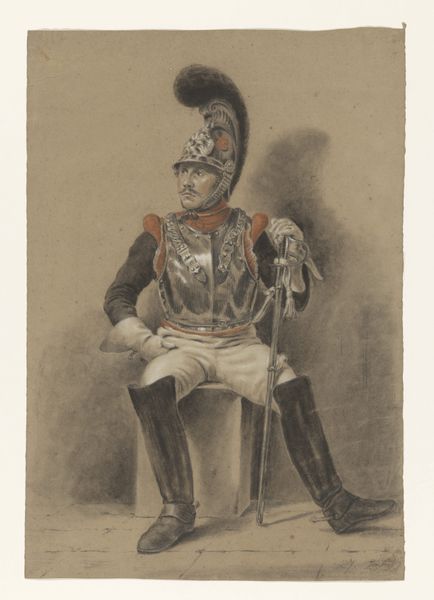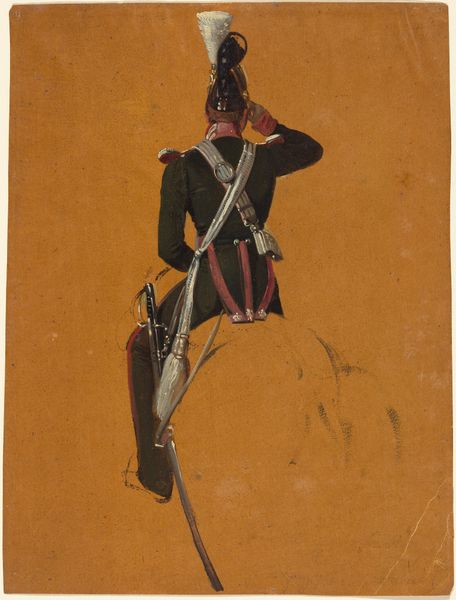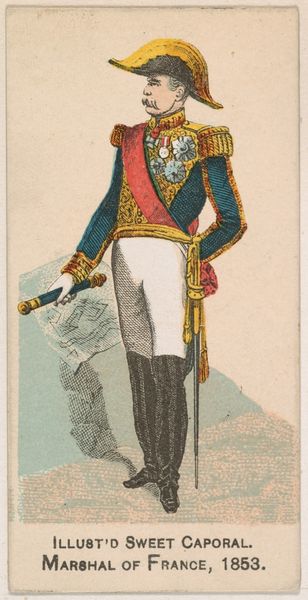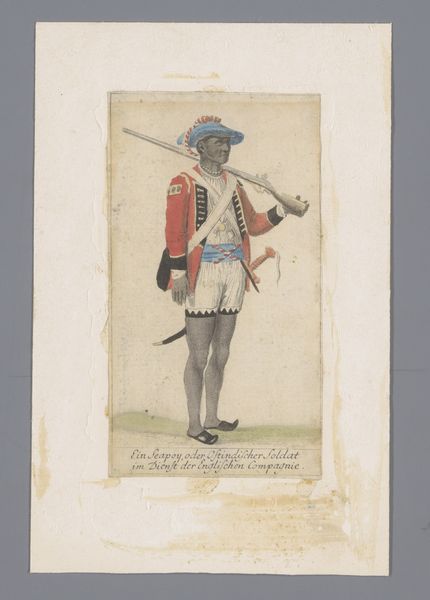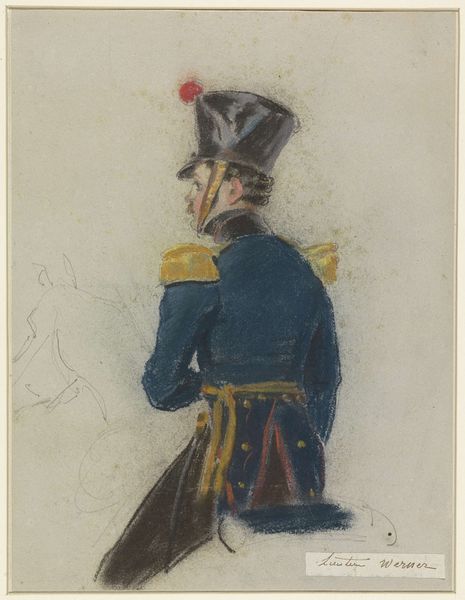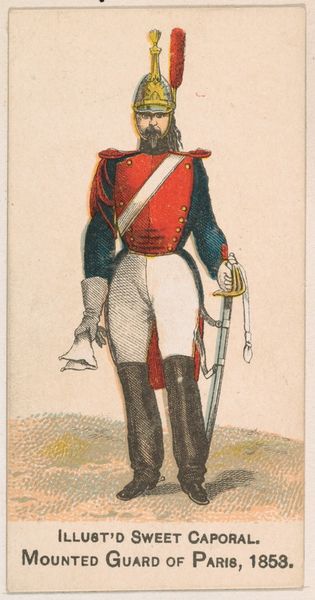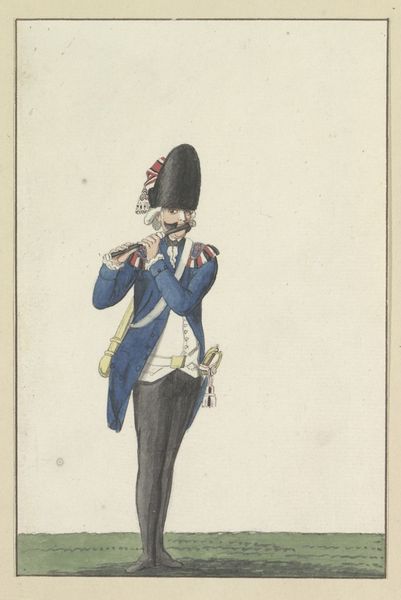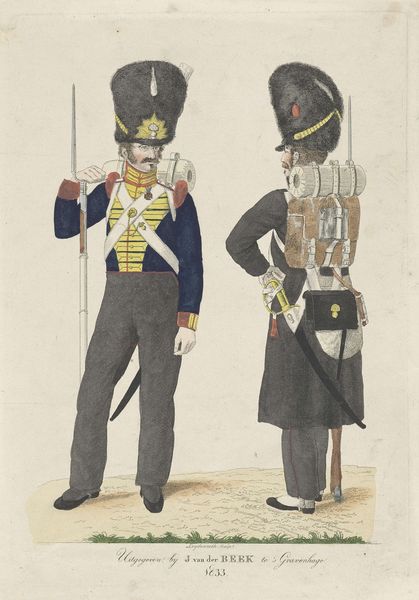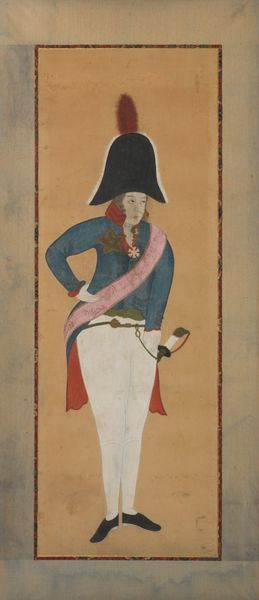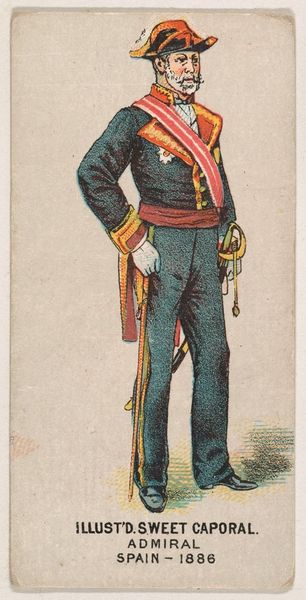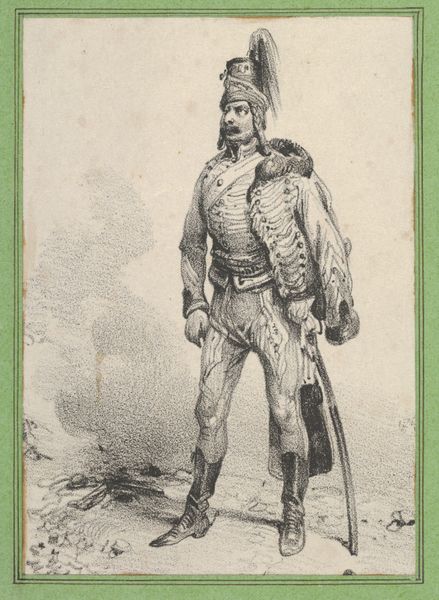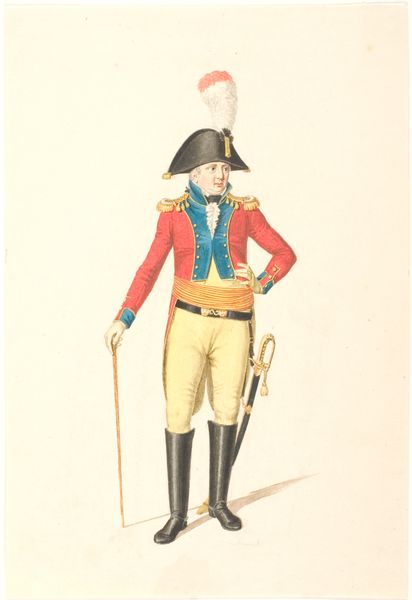
Half-length silhouette of an officer with a feathered hat 1825 - 1900
0:00
0:00
drawing, coloured-pencil, print
#
portrait
#
drawing
#
coloured-pencil
# print
#
caricature
#
caricature
#
coloured pencil
Dimensions: Sheet: 4 1/4 × 3 5/16 in. (10.8 × 8.4 cm)
Copyright: Public Domain
Curator: Welcome. Let's discuss "Half-length silhouette of an officer with a feathered hat." It's estimated to be from between 1825 and 1900 and it currently resides here at The Met. Editor: The first thing that strikes me is the… rigidity of the silhouette against the softer washes of color. It's quite formal, and imposing, isn’t it? The dark silhouette makes quite the statement. Curator: It does, and that's part of the intention. Silhouette portraits were popular because they offered an affordable way to capture likeness, a substitute of sort for painted portraits, accessible to a broader social stratum than previously possible. This piece, created using drawing and print techniques including coloured pencil, points to shifts in class and accessibility. Editor: Indeed. And beyond just capturing likeness, there's definitely an element of social commentary here, wouldn’t you agree? I mean, just look at the officer's towering hat and flamboyant feathers. It’s so over the top, almost verging on the ridiculous. It certainly speaks to ideas about performance and social roles. The contrast is definitely playing on assumptions about class. Curator: I find it also invites reflections about the military structure. Consider the time frame; we see immense social changes throughout the world, including political tensions and power struggles in Europe and the Americas. What public message is someone in such a uniform signalling, at the time? Editor: I can't help but wonder if this portrait isn't gently mocking that very power and status? You know, deflating the puffed-up ego just a little with subtle exaggeration. Almost, and maybe that is reading too much into it, a challenge. Curator: Perhaps. The charm of works like this, particularly ones where we don’t have the artist identified, lies in their ambiguity. It provides such fertile ground for interpreting history, politics, class, and even gender through dress. Editor: Absolutely. It reminds us how visual representation shapes and reflects social narratives, allowing us a glimpse into the anxieties and aspirations of the time. It also poses continued questions of who art is “for”, and what accessibility really means. I find the continued ability for such an intimate and revealing encounter makes a real mark. Curator: I agree. It shows how a seemingly simple silhouette can unpack layers of history and invite contemporary conversations.
Comments
No comments
Be the first to comment and join the conversation on the ultimate creative platform.
